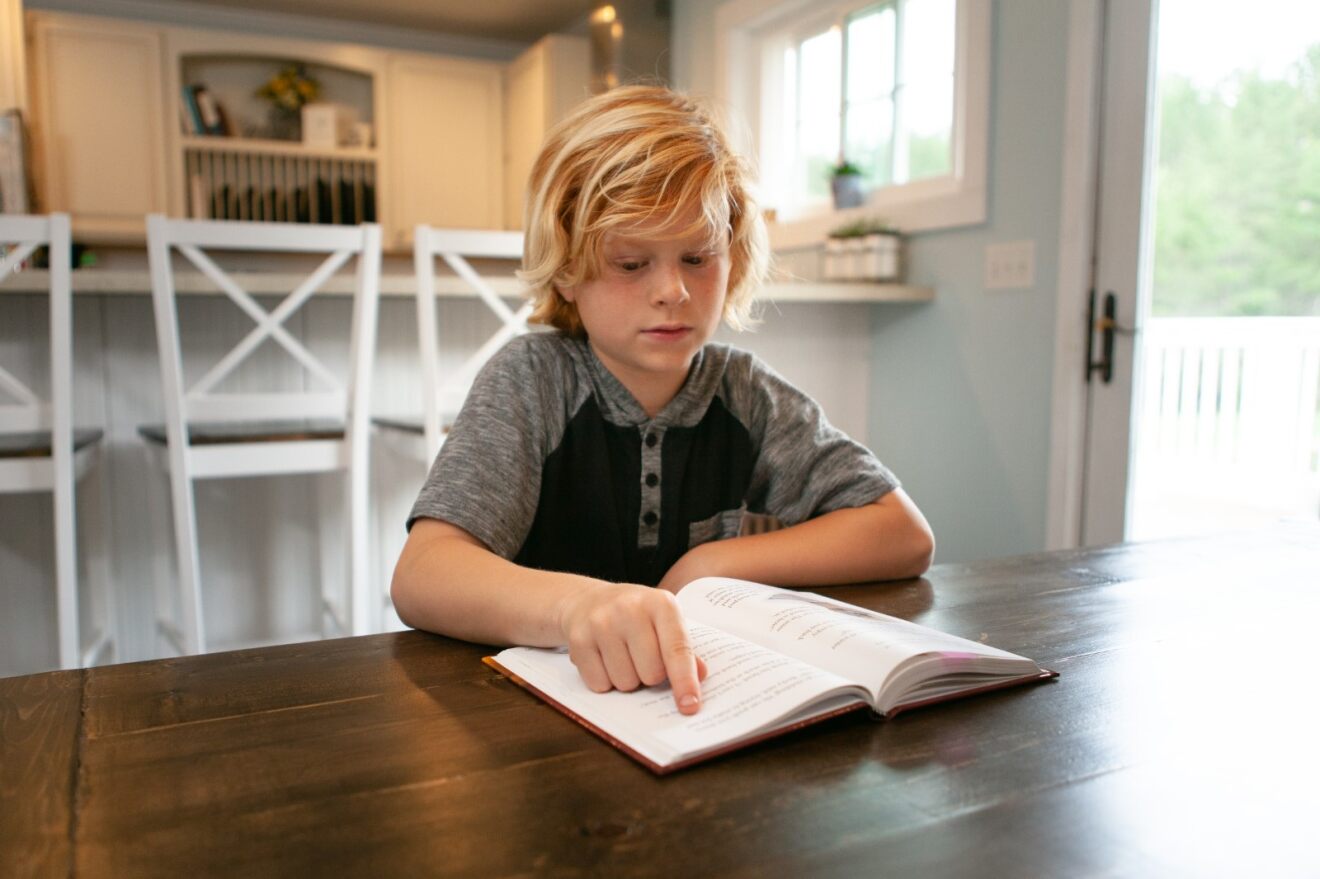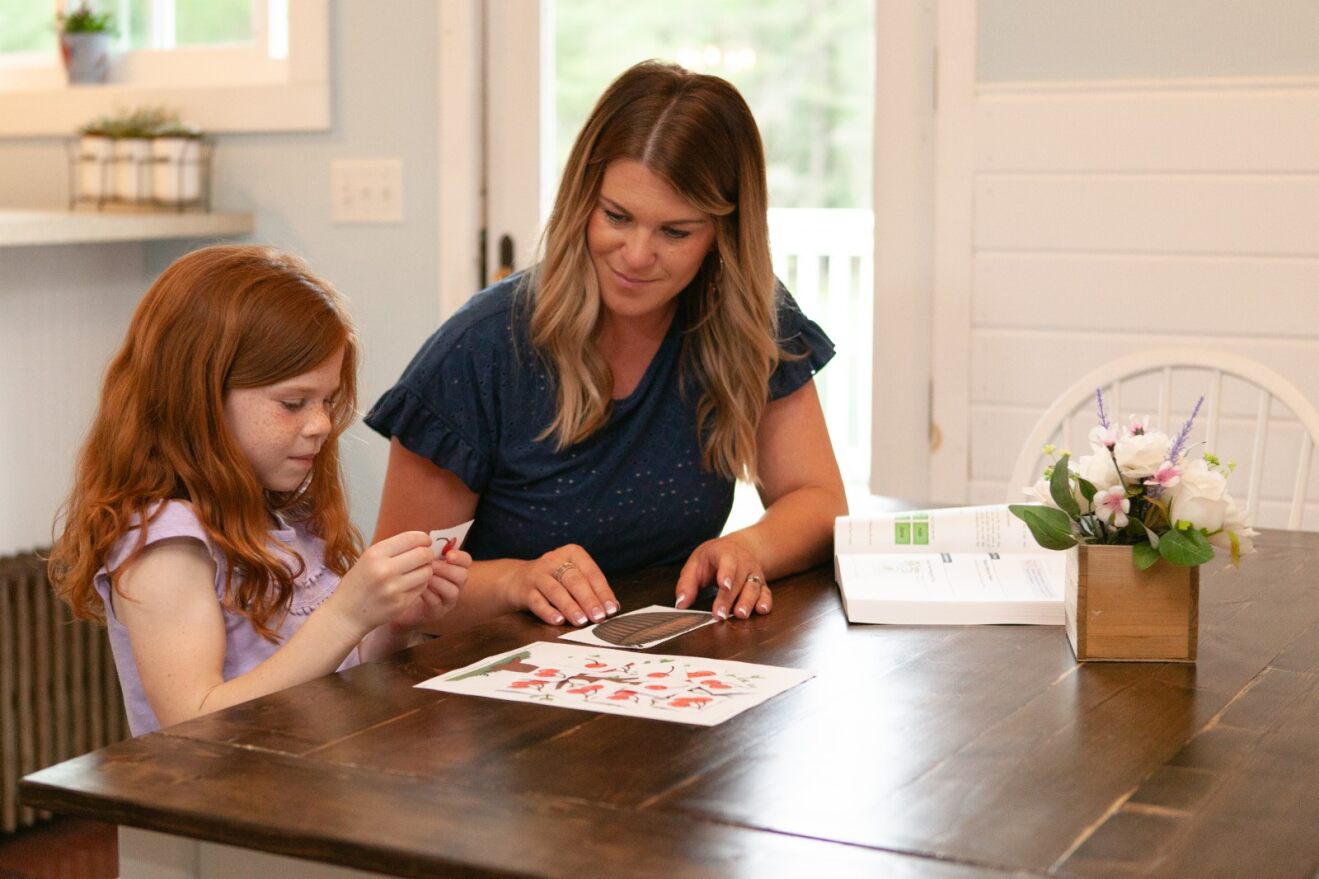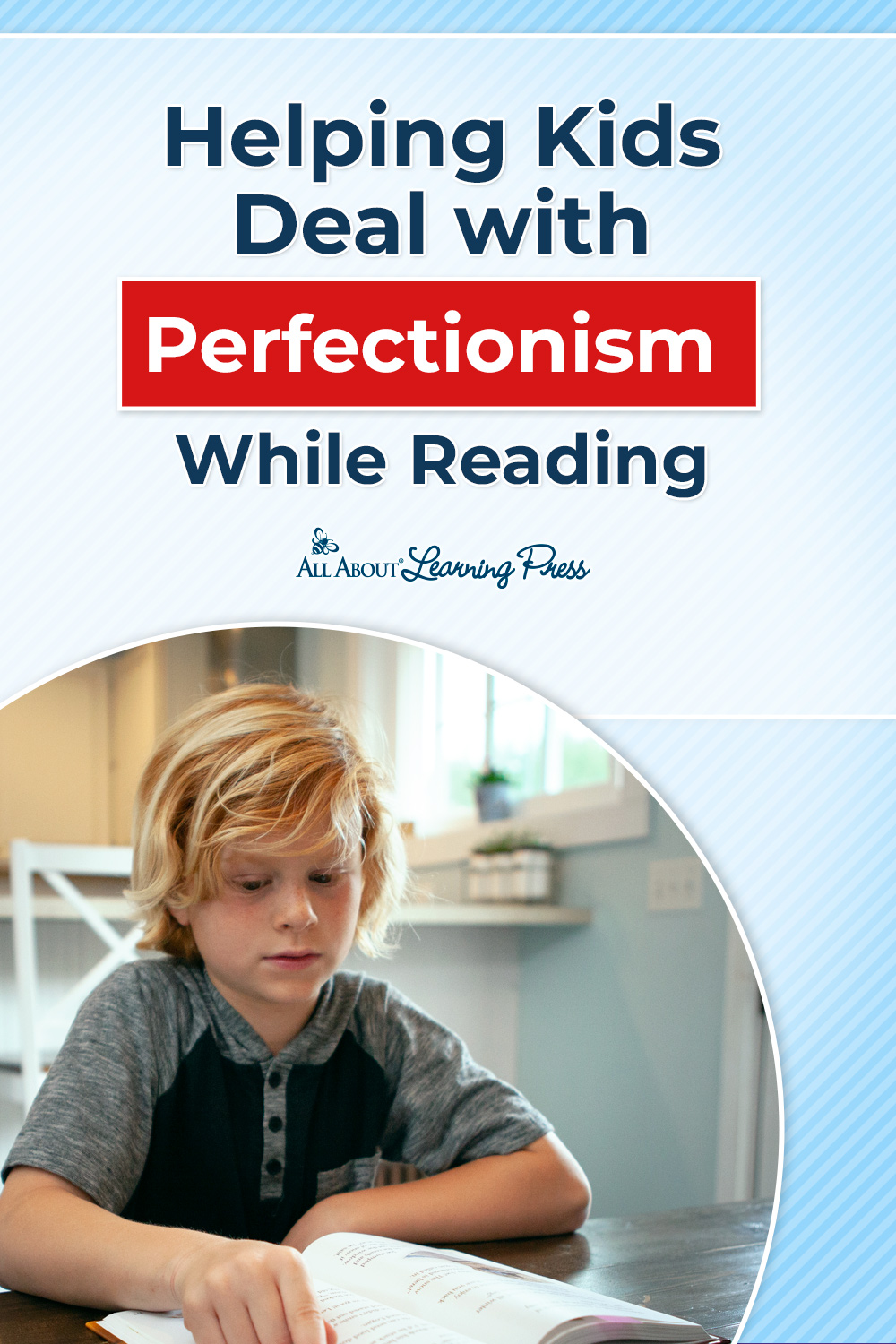Helping Kids Deal with Perfectionism While Reading
Perfectionism is a challenge that many students face, and not only does it take the enjoyment out of learning to read, but it can severely block a student’s progress. Take a look at some effective strategies for helping kids deal with perfectionism while learning how to read.

Students can face many challenges while learning how to read, but perfectionism is often overlooked. A student’s perfectionist tendencies can be frustrating for parents and teachers, but it is even more frustrating for the student. These students often develop a fear of failure that creates anxiety and prevents them from experiencing the joys of reading. But there are strategies that can help students, teachers, and parents overcome this challenge. Keep reading to discover our 10 best tips for helping kids deal with perfectionism while learning how to read.
Normalize Mistakes
It is important for students to know that making mistakes is a natural part of the learning process. When students are afraid to make mistakes, they hold themselves back from trying new things. Explain to your student that mistakes provide valuable opportunities for growth and improvement. You can also try sharing stories about how even adults make errors while reading or learning new things.
Praise Effort, Not Perfection
A great way to help students overcome perfectionism is by not focusing solely on perfect pronunciation and fluency. Instead, praise your student for putting in the effort, sounding out words, or trying to read independently. This helps encourage a mindset shift that will benefit them not just in the journey to reading fluency, but in many aspects of life.

Set Realistic Goals
It’s good to set goals for your student, but they need to be realistic. Set achievable reading goals that are tailored to their level, and break down larger goals into smaller, manageable steps to avoid overwhelming your student.
Encourage a Growth Mindset
Another mentality shift that will help your student inside and outside of the classroom is adopting a growth mindset. Make sure your student understands that their abilities are not fixed and that they can be improved with practice and perseverance. Instead of saying “I can’t read,” teach them to say “I can’t read YET, but I’m learning.”
Model Positive Attitudes
Students learn from the behavior of the adults around them, so strive to be a good role model for your student. Try to demonstrate the benefits of having a positive attitude toward challenges and trying new things, and share stories of how you overcame struggles by handling them with optimism and determination.

Make Reading Fun
Being a perfectionist can make it hard to have fun while reading. If you can make reading fun, kids won’t take it — or themselves — so seriously. Try incorporating playful and enjoyable reading activities into your student’s routine, such as using funny voices, acting out dialogue, playing reading and literacy games, and choosing books or magazines that align with their interests.
Here are a few reading and spelling games we love:
- Bananagrams – How quickly can you take a handful of letters and create an intersecting grid of words?
- Boggle – Time is ticking—can you find all the words hidden in the grid?
- Apples to Apples Junior – This fast-paced card game is not only a ton of fun, it’s also a wonderful way to expand vocabulary!
- Pickles to Penguins! – This quick-thinking, picture-linking party game helps strenghten language skills.
Read Together
Reading together is a great way to model positive learning habits. Take turns reading aloud, and try sounding out difficult words or even making the occasional mistake. This can create a supportive reading environment where your student won’t feel as much pressure to be perfect.
Limit Pressure and Competition
Speaking of pressure, it’s very important to avoid comparing your student’s reading level with others or setting unrealistic expectations. Of course, many students are competitive, and it can be difficult to get them to stop measuring their ability against that of their peers. Be sure to focus on their individual growth and always celebrate their achievements, no matter how small.

Provide Emotional Support
Perfectionism is a very real challenge, and it usually isn’t enough to simply tell your student not to worry so much. Don’t forget to be empathetic and understanding of your student’s feelings of frustration or disappointment. Offer encouragement and reminders that learning to read takes time and there’s no need to master it right away.
Seek Professional Help If Necessary
Perfectionism is a real challenge that can have strong negative effects both on students and adults. If you think your student’s perfectionism is significantly affecting their mental health and happiness, consider seeking support from a counselor or therapist. There are plenty of talented, qualified experts that have experience helping kids overcome perfectionism, and getting help earlier rather than later can make a big difference.
Pushing past perfectionism can be a long journey, but hopefully some of these tips will help get your student on a path toward healthy learning. Reading can be so enlightening, therapeutic, and enjoyable, and it’s a real shame for anyone to miss out on those benefits due to a fear of failure.
Let us know if any of our tips on helping kids deal with perfectionism worked for you and your student, and don’t hesitate to share any advice or techniques of your own!









Vhonani
says:Wow , this sound helpful
Robin
says: Customer ServiceI’m glad this is helpful, Vhonani!
Stan
says:Permit me to come in here with issue in learning. How I do handle a child ( almost in adulthood ) who can’t form words, only identifies letter, can’t easily count or money or identify currency denominations. Also, can’t easily differentiate between today and yesterday or tomorrow, has mild speech problem, communicates mostly on issues of his interest, etc. Humane, good in physical activity and errands.
Robin
says: Customer ServiceStan,
I’m sorry to hear your student is having such struggles. With such profound difficulties, such a student needs one-on-one assessment and therapy to help increase his or her understanding and foundational skills. While I can point you toward resources for teaching letters and how to sound out words, numbers, speech, and other such concepts aren’t our specialty. I’m sorry I’m not more help.
Rachel
says:This was right on time for me and my struggling reader!
Robin
says: Customer ServiceI’m glad this was timely for you, Rachel!
Leah Buehler
says:Thank you for these tips! My 4 year old is just starting to blend two and three letter words. He gets frustrated if he can’t do it perfectly and gives up by saying something he knows is wrong just to be funny. I will have to try these tips out.
Robin
says: Customer ServiceLeah,
Most children are not ready to have success with blending sounds into words until they are older; it is a developmental thing.
Here are some tips for games and activities for oral blending to help your child work up to blending words:
You say the sounds of a word you are thinking of, and then he blends them into a word. Can he guess a word that you mean if you just say the sounds? Do easy 3-sound words first, like /k/-/ī/-/t/ (kite). This is a game that can help develop his blending skills. If he can blend orally, then he is well on his way to being able to blend written words.
You can make this easier to do it as a part of an “I-Spy” game. Say, “I spy with my little eye something that sounds like /s/-/ŏ/-/k/.” (Choosing something that is within your child’s line of sight makes it easier.)
Let him say sounds for you to blend too, even if they make nonsense words. Laugh and have fun with it! Hearing you blend sounds can help him begin to hear how individual sounds change slightly when they are blended.
If you are on our Facebook Support group, here’s a great video that a mom shared about teaching her daughter oral blending. If you aren’t in the group already, you can request to join, and we’ll get you approved.
Another thing that you can do with young kids that’s fun: (First, the parent demonstrates this, and then the child mimics.) Lay three sheets of colored paper on the floor. Write one letter on each sheet of paper, like M – A – P. Jump on the first paper and say /mmmmm/. Jump on the second paper and say /ăăăăă/. Jump on the third paper and say /p/. Then start over, and do it quicker: /mmmmăăăă/-/p/, and then /mmmmmmăăăăăp/. Finally, run across the papers and say “MAP!” You can do a similar activity on the table with a race car and letters written on index cards.
You can also play oral segmenting games–say a word that has 2 or 3 sounds, and see if she can say the sounds in that word. Here’s a video that demonstrates how to segment sounds. (This post also talks about spelling, but don’t work on that yet–just segmenting words orally.)
Another game I used to play with my kids–I would pull down 3 letter tiles such as c, t, and a. I would draw 3 blanks on the board and say, “I want to make the word cat. What’s the first sound in cat?” (/k/) “Right! Which letter should I put first?” (see if he puts the C in the blank, or help her do that). “Good! What’s the second sound in cat? /kăăăăt/” (/ăăă/) and so on. See if she can help you make the 3-sound word, and then model how to sound it out and read it using the full blending procedure.
Just play around with the tiles and other activities and games for a few weeks and see if he starts to catch on to blending.
Kimberly
says:This is so helpful! This is definitely where we struggle. Question-should I correct every mistake when my daughter is reading aloud? Or does that create more anxiety? When I correct her while she’s reading aloud, she gets upset and discouraged. Thank you for your help!
Robin
says: Customer ServiceGreat question, Kimberly!
During reading lesson time, yes. It is important to have children read with a high level of accuracy during teaching time. Otherwise they could develop a habit of misreading that could lead to significant comprehension problems.
However, don’t rush to correct. When she is reading a story, wait until the end of a sentence. Then, gently point out, “Ooops, that’s not quite right. Let’s try that sentence again.” If what she read didn’t make sense, but sure to point that out. This will encourage her to be thinking about what she is reading when she reads it so that she will move more toward self-correcting.
And any time she self-corrects, be sure to praise, praise, praise her! Everyone makes mistakes when they read; being able to catch your own mistakes and fix them is an essential skill.
Take time to discuss with her the importance of reading exactly what is written, and that you are pointing out when something isn’t read as written so that she can learn to read better and better. Also, when you read aloud to her and you misread a word, point it out! Stop yourself and say, “Oh, that would should have been…” then reread the sentence with the right word. This shows that everyone, even adult readers, make mistakes and that they are no big deal.
And, when appropriate, say, “Oh, I’m glad you made that mistake! Now I can show you…” Help create a viewpoint of mistakes as learning opportunities.
Also, let her know if she got every word correct every time, she wouldn’t be learning anything! You want her to learn how to be a great reader, so that means sometimes there may be mistakes. That is good and right.
But, if she is reading aloud when it is not reading lesson time (maybe reading a story later in the day), don’t correct then. That is not teaching time, so don’t teach. Allow her to just enjoy reading at those times.
I hope this helps! Learning to be okay with mistakes can be a hard lessons for some children. But it is an important lesson, but everyone makes mistakes at times.
Beverly
says:These are great tips! Question: how to deal with a child who reads extremely well, but tries to read too quickly and makes many mistakes?
Robin
says: Customer ServiceGreat question, Beverly.
We have an article on that with lots of tips. Check out 10 Solutions for Kids Who Read Too Fast!
However, if you find you need more help, I’m happy to do so!
Marie
says:I think this is my 3rd kid. He didn’t even want to color for the longest time because he wasn’t perfect. He does color now, and hopefully switching to All About Reading will help him get over the hump with reading.
Robin
says: Customer ServiceMarie,
I hope you found this article full of helpful ideas for your 3rd child.
Let me know if you have questions or need help with placement with All About Reading. I’m happy to help!
Jenna
says:“Praising Effort Not Perfection”! This has changed everything for my 6-year-old!
Robin
says: Customer ServiceWonderful, Jenna! Praising effort does make a huge difference for many children.
Jacqueline
says:Such an important thing to keep in mind. It’s so easy for praise and reward to drift into a place where we can cause less engagement rather than more.
Robin
says: Customer ServiceYes, such a good point, Jacqueline. I often tell myself to praise what I want to see more of, and in learning, I want to see more effort, more thought, more engagement.
Marija
says:Thanks we need help with this
Robin
says: Customer ServiceYou’re welcome, Marija. I hope this is very helpful.
Caroline
says:How do you tell if a child is a perfectionist versus just being obstinate and using perfectionism as an excuse?
Robin
says: Customer ServiceCaroline,
Interesting question. While I don’t know the details about this child, in my experience, obstinacy is pretty much always a coverup for something else. When a child (or even adult) digs their heals in hard about something, they have a deeper reason. Being obstinate is a lot of effort!
Assume the child is under the pressure of being perfect and try the tips outlined here and see how it goes.
Leigh
says:This is so relevant for me and my girls! Thank you!
Robin
says: Customer ServiceLeigh,
I’m glad this is relevant, and I hope it will be helpful to you and your girls! You’re welcome.
Franny
says:Such helpful thoughts, thank you for this post! I know focusing on a growth mindset has been a game changer for my perfectionist Kindergartener, and—maybe because I am one myself?—it took me a while to learn how to encourage him! All of these resonate with me!
Robin
says: Customer ServiceFranny,
You are so welcome. A growth mindset can be powerful! It’s great to hear that focusing on it has been helpful for your kindergartner.